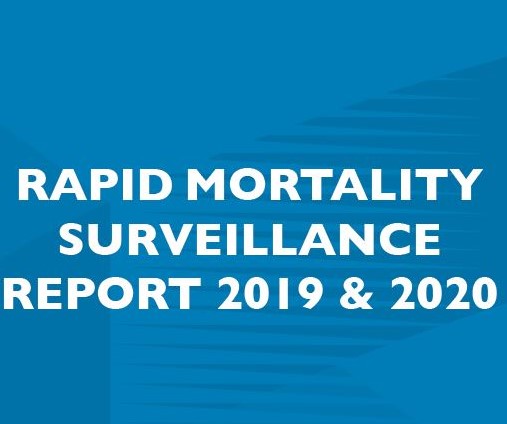Empirical data suggests average life expectancy in South Africa declined by only 0.6 of a year in 2020
 Cape Town | While mortality of older persons in South Africa increased due to COVID-19, mortality of the young, particularly those under five years of age, declined due to the impact of interventions to mitigate the pandemic.
Cape Town | While mortality of older persons in South Africa increased due to COVID-19, mortality of the young, particularly those under five years of age, declined due to the impact of interventions to mitigate the pandemic.
This is according to the Rapid Mortality Surveillance (RMS) Report 2019 and 2020 released today by the South African Medical Research Council (SAMRC)’s Burden of Disease Research Unit in collaboration with the University of Cape Town’ (UCT)’s Centre for Actuarial Research. The RMS reports on annual trends in life expectancy, maternal and child mortality, adolescent mortality, old-age mortality and premature mortality from non-communicable diseases – it derives estimates of key health status indicators primarily from data obtained from the National Population Register.
The report was also published by the South African Medical Journal (SAMJ), a peer-reviewed, internationally indexed, general medical journal publishing leading research impacting clinical care in Africa.
The data show that between 2019 and 2020, the life expectancy at birth in South Africa dropped by only 0.6 of a year (0.2 of a year for males and 1 year for females) to 64.7 (62.2 for males and 67.2 for females) years. This is very muted in comparison with the changes in life expectancy experienced in other countries experiencing significant SARS-CoV-2 epidemics. The reasons for this are expanded on in an article recently published in the South African Medical Journal.
“The major reason for the muted impact of COVID-19 on life expectancy was a decline in the under-5 mortality rate per 1 000 live-births dropped from 36 in 2019 to 28 in 2020” says Prof Debbie Bradshaw, a researcher from the SAMRC’s Burden of Disease Research Unit and co-author of the report. The authors noted that that there was less seasonal variation in the numbers of childhood deaths during 2020 than in previous years suggesting that lockdown and other efforts to reduce the spread of SARS-CoV-2 epidemic probably reduced some of the infectious diseases experienced by young children.
“The major reason for lower decline in life expectancy of males than female can be found in the decline in the mortality of young adults as a result of the marked reduction in the number of deaths from unnatural causes during periods of stringent lockdowns including alcohol restrictions, particularly for men, which were actually lower in 2020 than in 2019” continues Prof Debbie Bradshaw.
However, the authors of the report warn that the weekly number of deaths indicate that mortality in 2021 is likely to be somewhat higher than in 2020 because of the peaking of the devastating 2nd and 3rd waves of the COVID-19 pandemic associated with new variants of the virus in 2020.
“For the country to get back on track with efforts to improve health and extend life expectancy, there needs to be a concerted effort to ensure that our health programmes and services are restored to pre-pandemic levels and COVID-19 vaccination of vulnerable people, such as people aged 60 and older, needs to be prioritised” says Prof Glenda Gray, SAMRC President and CEO.
The SAMRC also publishes Weekly Deaths Report which provides information on deaths registered in almost real-time on the National Population Register. These are used to determine the actual number of deaths that have occurred in the country and calculate the number of excess deaths over and above the numbers that would be expected had the historical mortality trends before the COVID-19 pandemic continued.
NOTE TO THE EDITOR
- More information about the change between 2019 and 2020 can be found in the new publication in the South African Medical Journal: The impact of the SARS-CoV-2 epidemic on mortality in South Africa in 2020
- The complete report can be accessed via the SAMRC’s website: Rapid Mortality Surveillance Report 2019 & 2020

